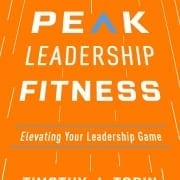Easy Way to Sync Salesforce Leads to Custom Objects
Nowadays, it is essential to keep all business data, including contacts and leads, in one centralized place to manage it effectively. By syncing your Salesforce data with Outlook and Gmail, you can make the most of the CRM platform and save your working time so that productivity will rise. Here we will explain how to do it in a blink with smart revenue intelligence software.
Lead, Contact, Custom Object: A Bit of Theory
Though these terms sound similar, they do not mean the same. Let’s view their meanings one by one:
- A contact is an individual who can legally do business with you. It refers to the person who can become a paying customer in practice.
- A lead is a person who is still doubtful about your organization and isn’t ready to invest in your product or services. A Salesforce lead is any lead you’ve captured from your business website, an online quiz, a paid ad, a phone call, or a social media contest. Keep in mind that leads differ as some people are more inclined to buy your products, and others are not. Your sales representatives should manage to qualify who is who among them.
- A Salesforce standard object is integrated with every Salesforce organization. Your leads and contacts sync with prospects and are related to accounts with connected campaigns in Salesforce.
- By Salesforce custom objects we mean those created to store information specific to your organization or industry. These can also be objects in other Salesforce clouds. Custom objects have to be connected to a lead or a contact; otherwise, you can’t do anything with them. They let you link additional data to a contact or account record.
Why Sync This Data?
If you utilize Salesforce regularly, you might be well aware of its powerful functionality. However, to make the most of the platform capacities, you should integrate your Salesforce account with other applications you currently use. We bet the services such as Outlook or Gmail have been already implemented in your business workflow. Why not take advantage of integrating them into your Salesforce account to keep and manage all the data in a unified place?
In doing so, you can easily transfer/sync data like contacts, events, leads, and tasks between these systems. It will streamline your organization’s workflow and build a favorable experience for your clients. Any query-able object that is linked to a lead or contact in your Salesforce account can be synced with those on other platforms. This method will help you store your sales and marketing data in sync and use data from custom objects in smart campaigns and lists.
Easy Custom Object Syncing With Revenue Grid
Now that you are familiarized with the basic terminology and benefits your business can gain from data synchronization, we’d like to provide a solution that can make this process fast and straightforward. There’s no need to do everything manually since you can centralize data from your Salesforce, Outlook, and Gmail accounts into one dashboard with Revenue Grid. This powerful tool automatically updates all data about your leads and syncs your:
- contacts
- emails
- tasks
- appointments, etc.
It enables you to always keep in touch with your potential clients and make the most of any business opportunity. Also, this software helps you capture leads to Salesforce much faster.
Since Revenue Grid is a multi-functional platform, it empowers you to:
- seamlessly sync data between Salesforce, Outlook, and Gmail, without any conflicts between separate data sources
- automatically create new leads, accounts, and opportunities in Salesforce and integrate data there
- safely save your past data such as emails, contacts, and calendar items
- build rules to automatically monitor any Salesforce-related process
- understand whether a lead can become an actionable opportunity
Opt For Smooth Data Synchronization
It is crucial for any business to optimize their working time to the fullest to boost productivity, evolve, and stay ahead of the competition. While you are searching through tons of data scattered somewhere in Salesforce, Outlook, Gmail, etc., your business opponents might reach new customers and conclude successful deals. Now that you know how to sync objects, contacts, and leads from Salesforce with custom objects in Gmail and Outlook, you can spend less time when working with emails.













Leave a Reply
Want to join the discussion?Feel free to contribute!